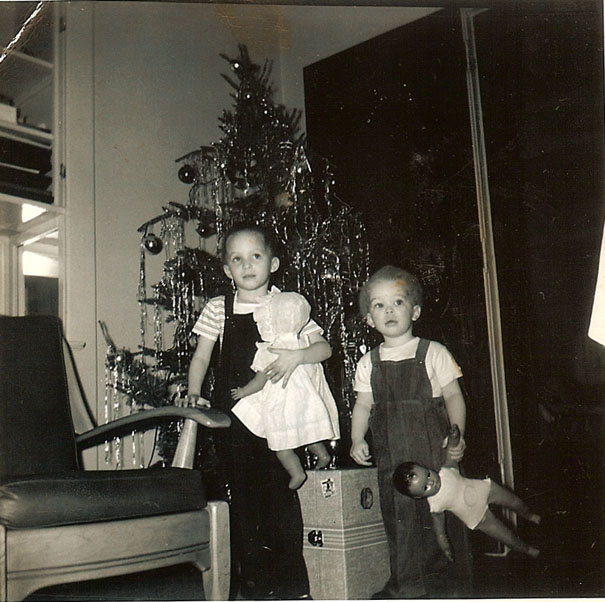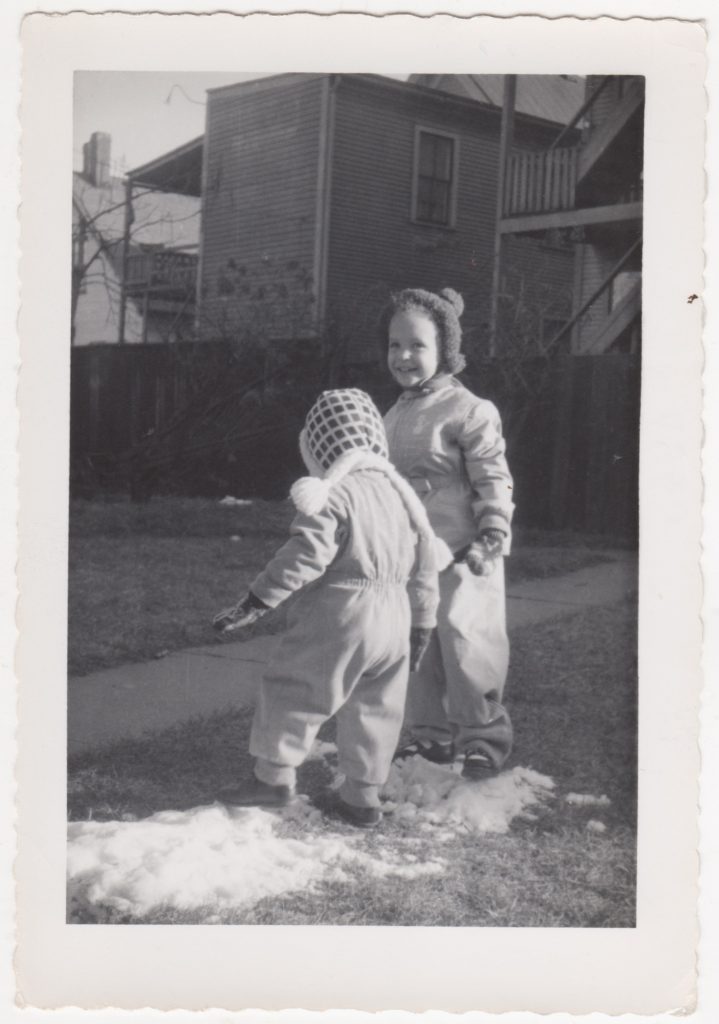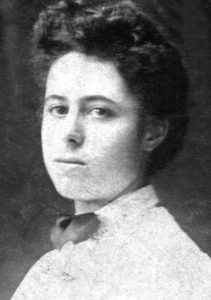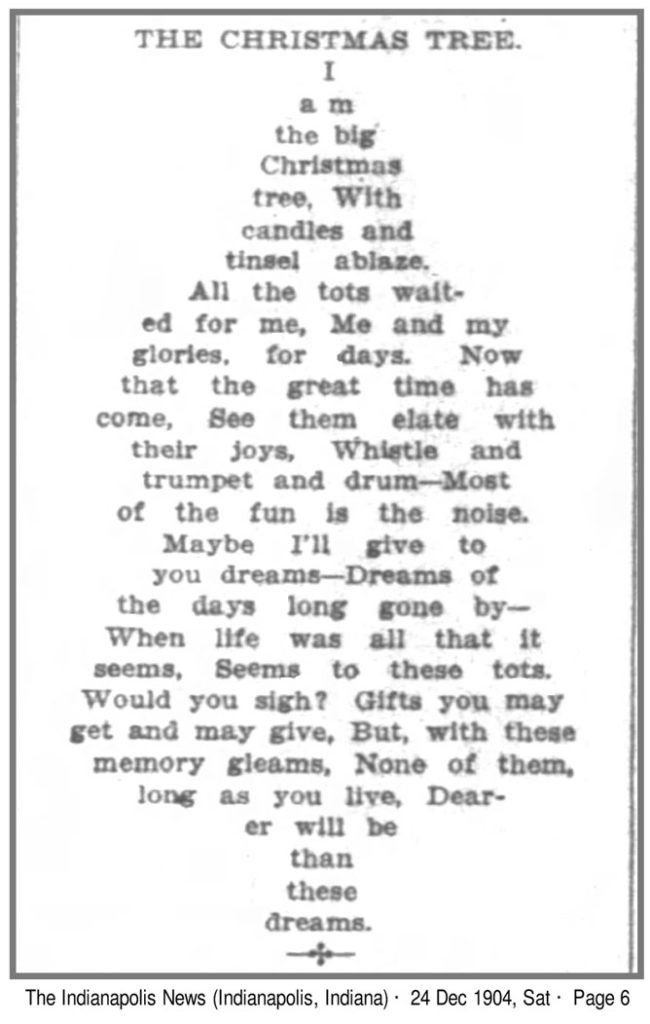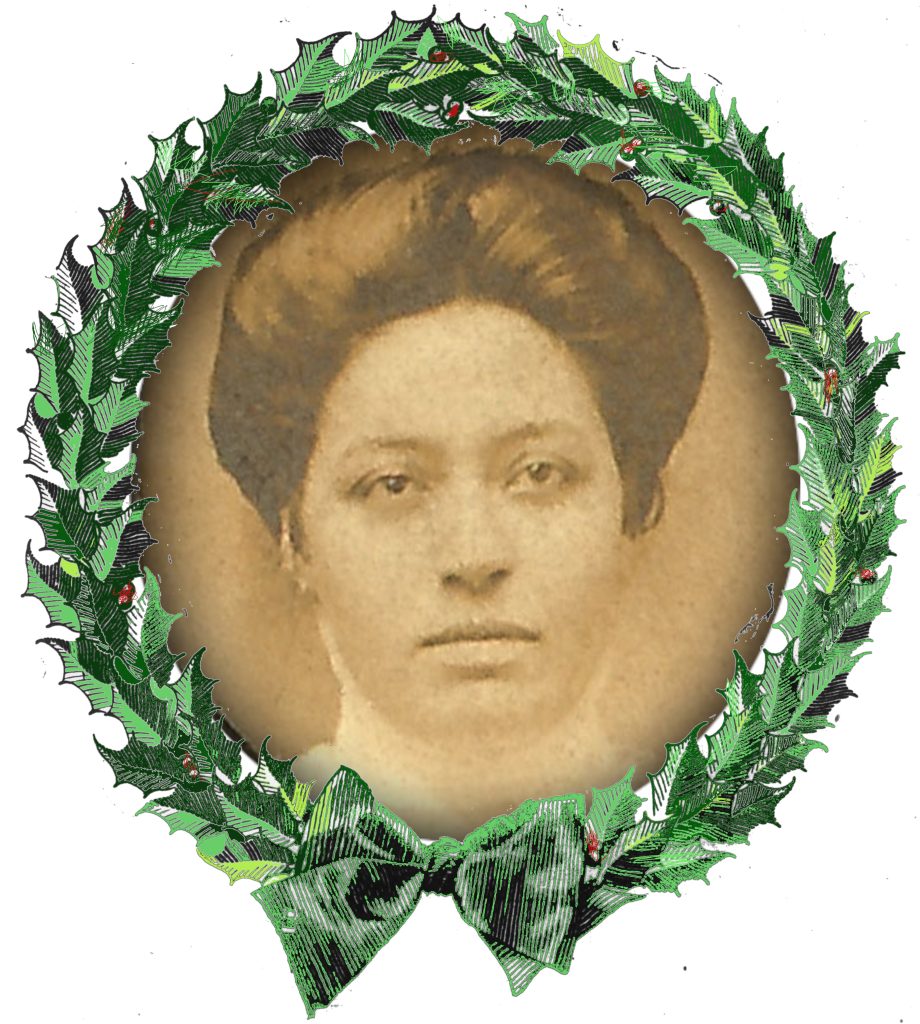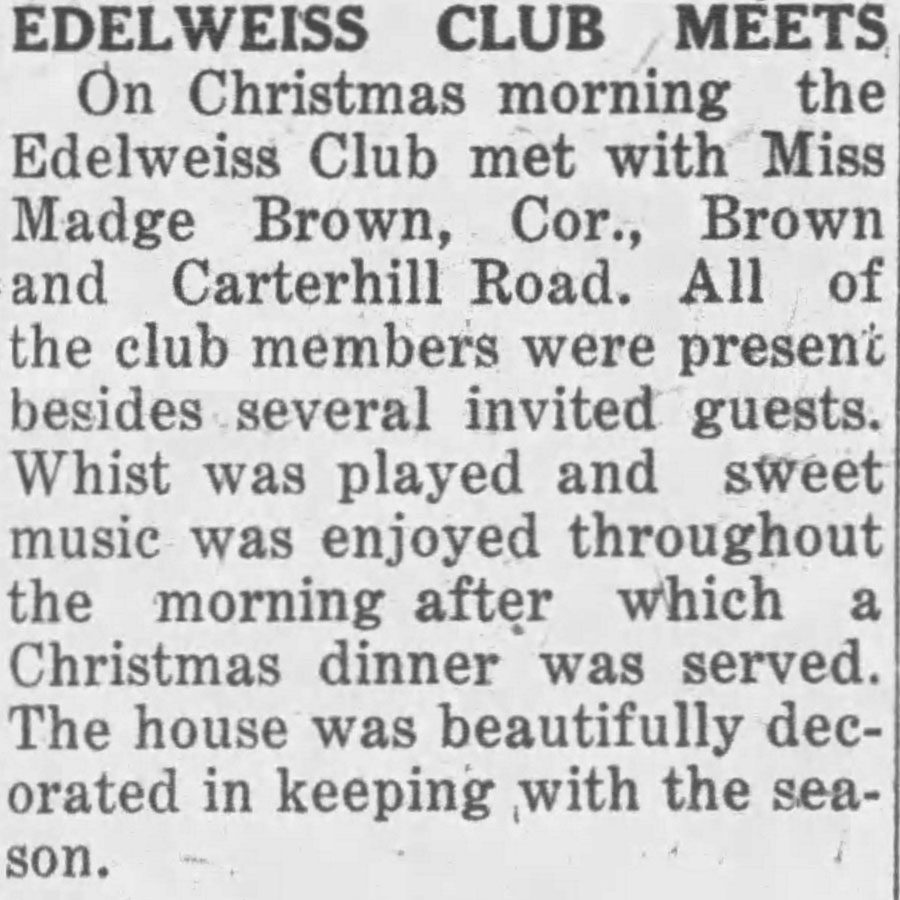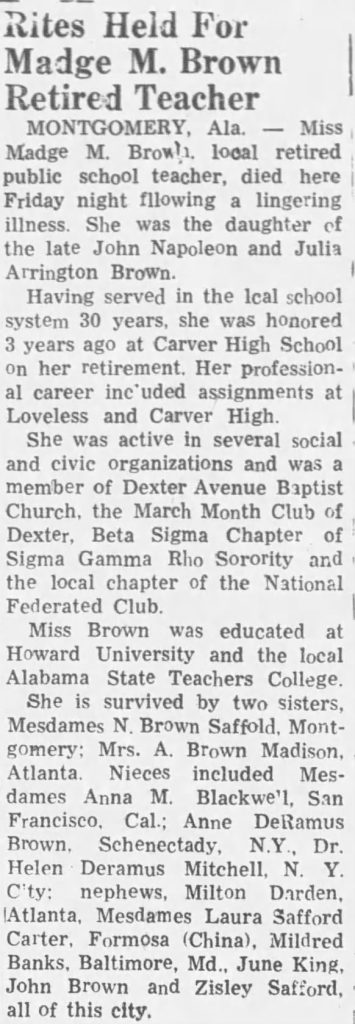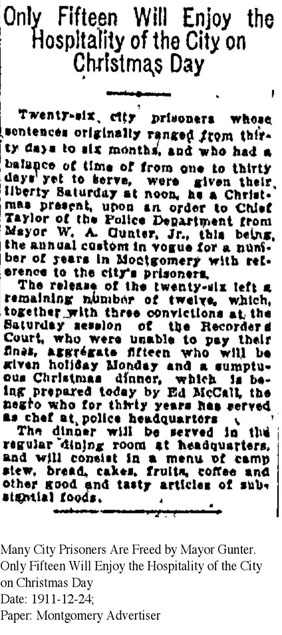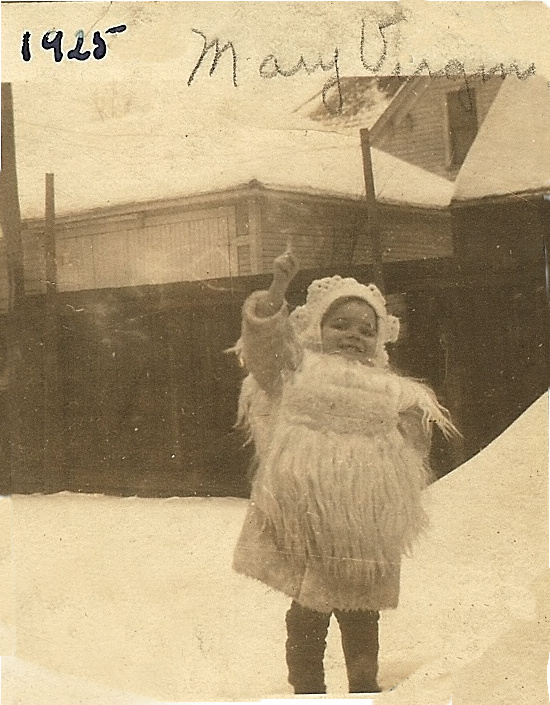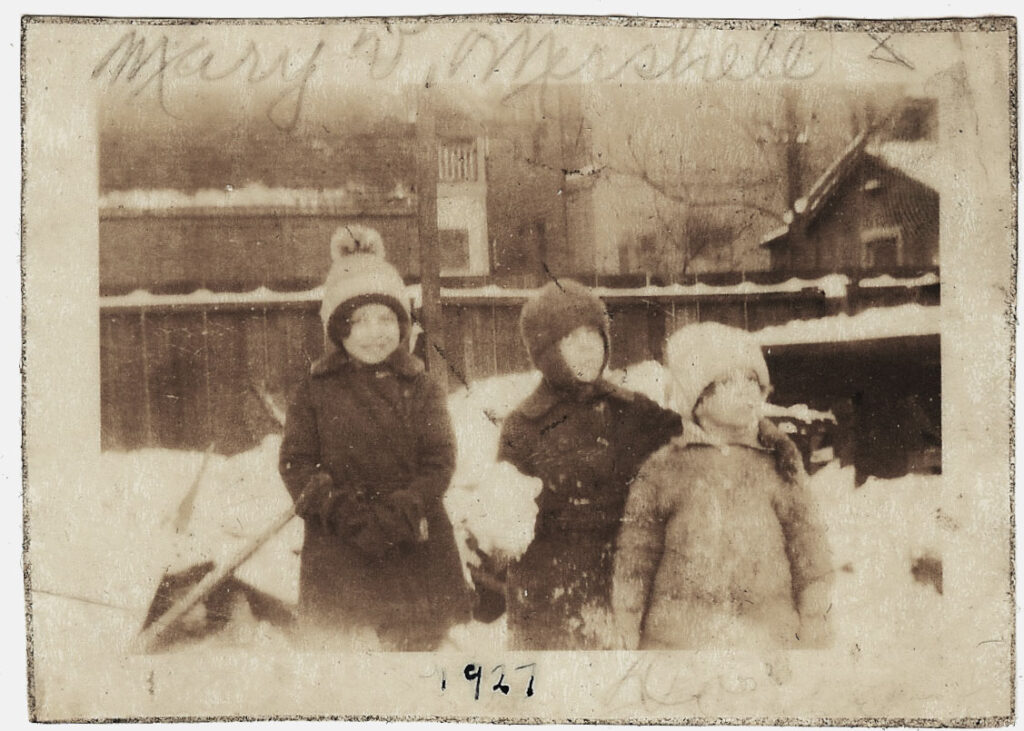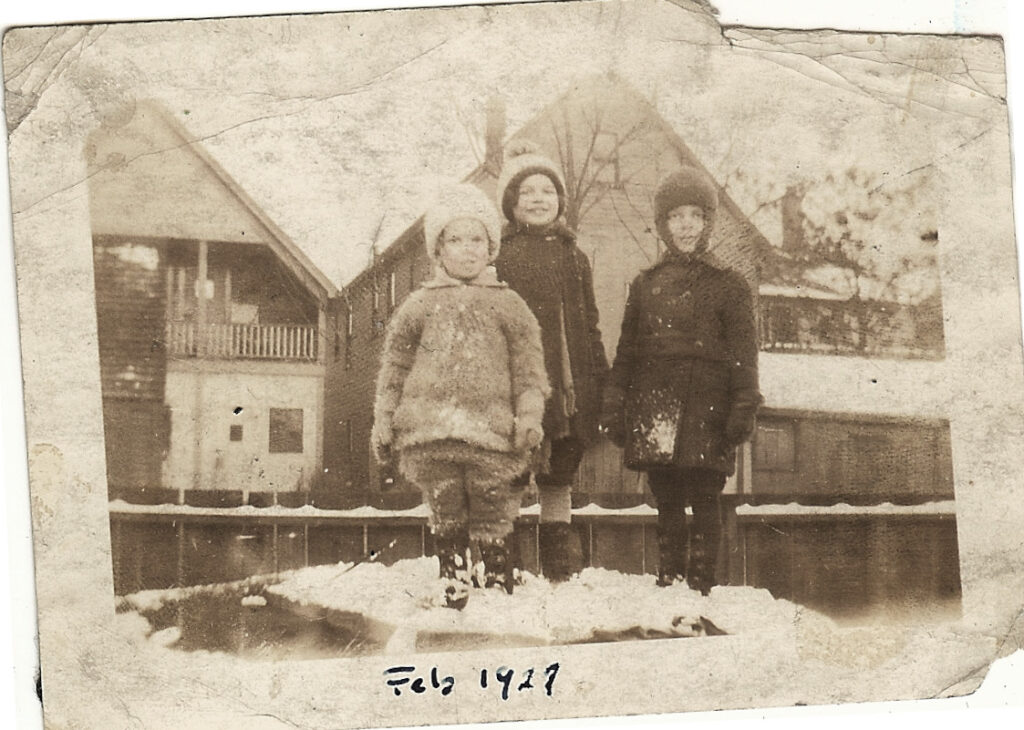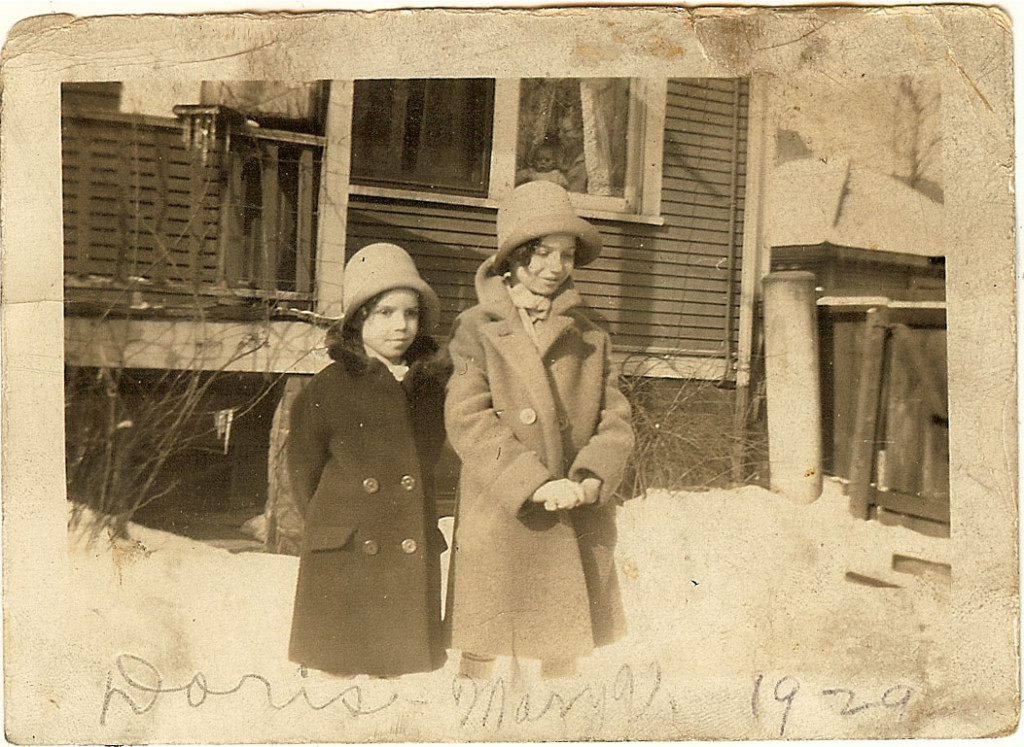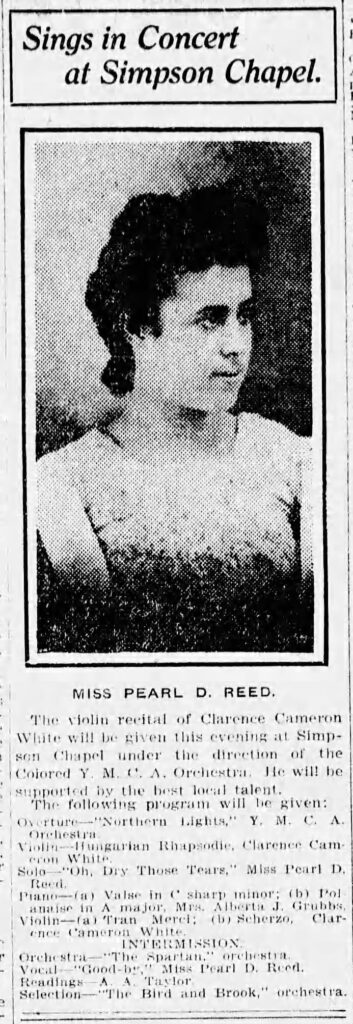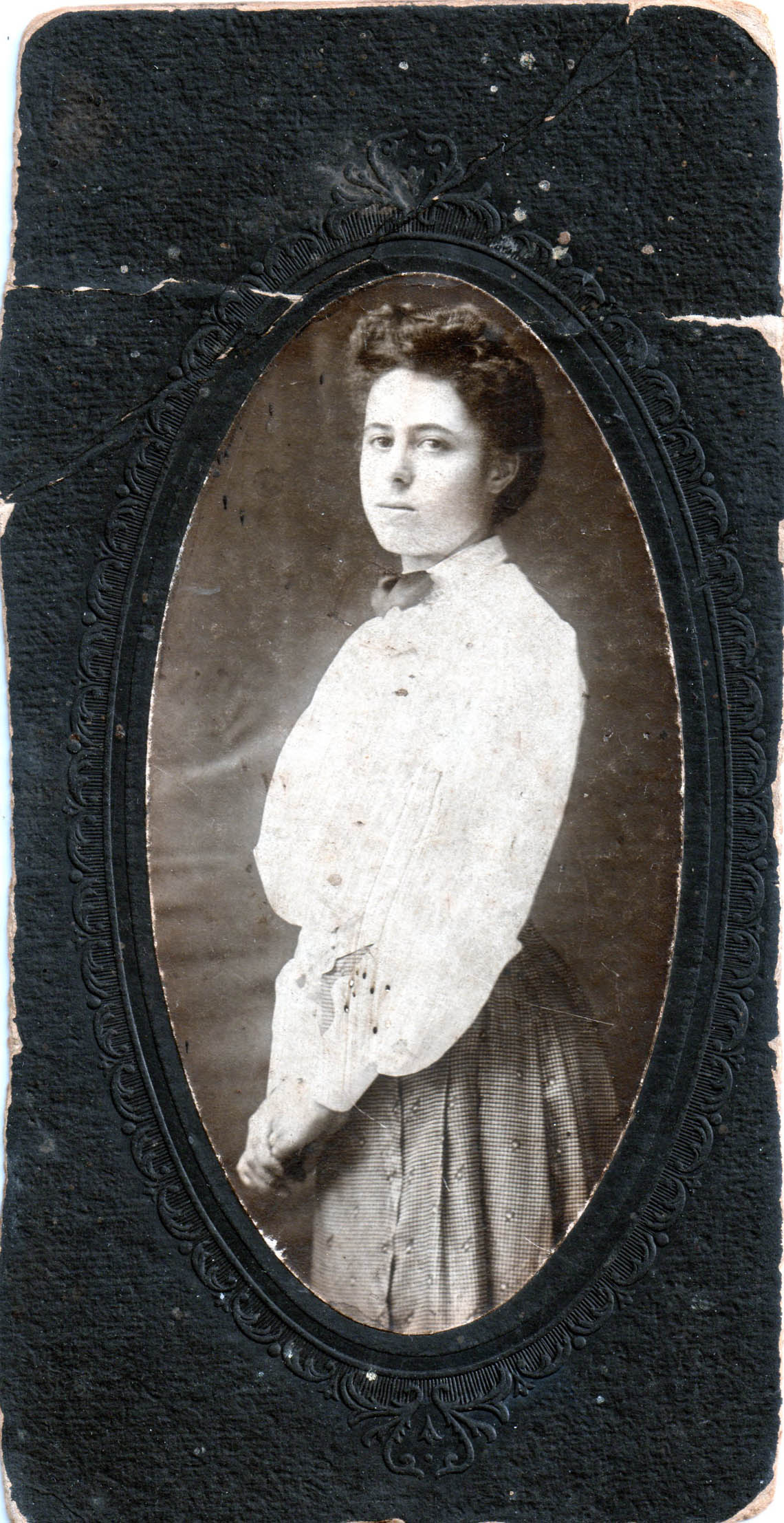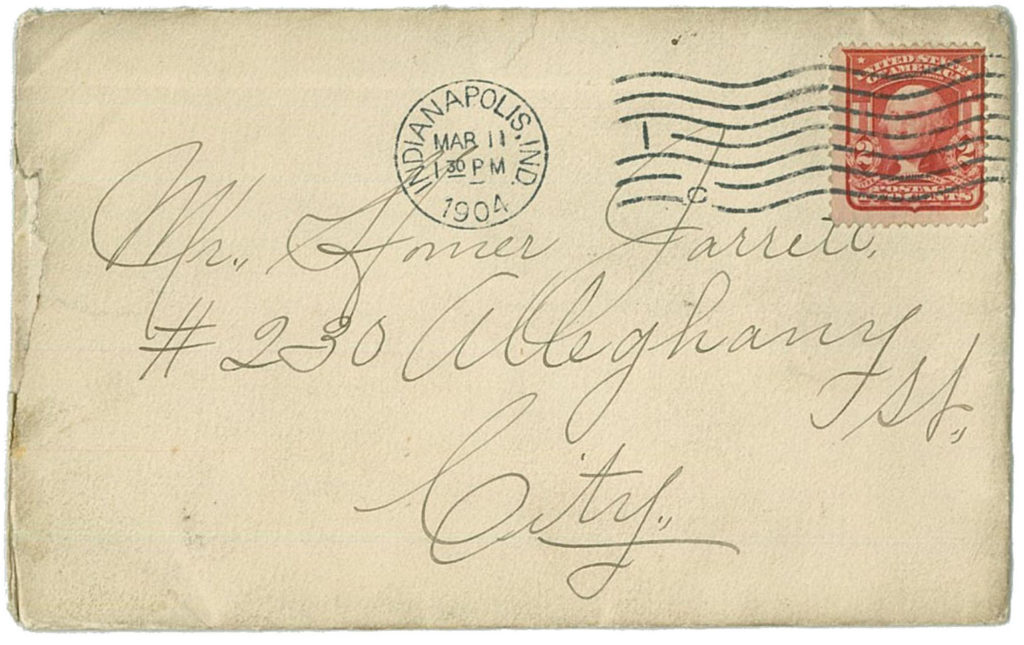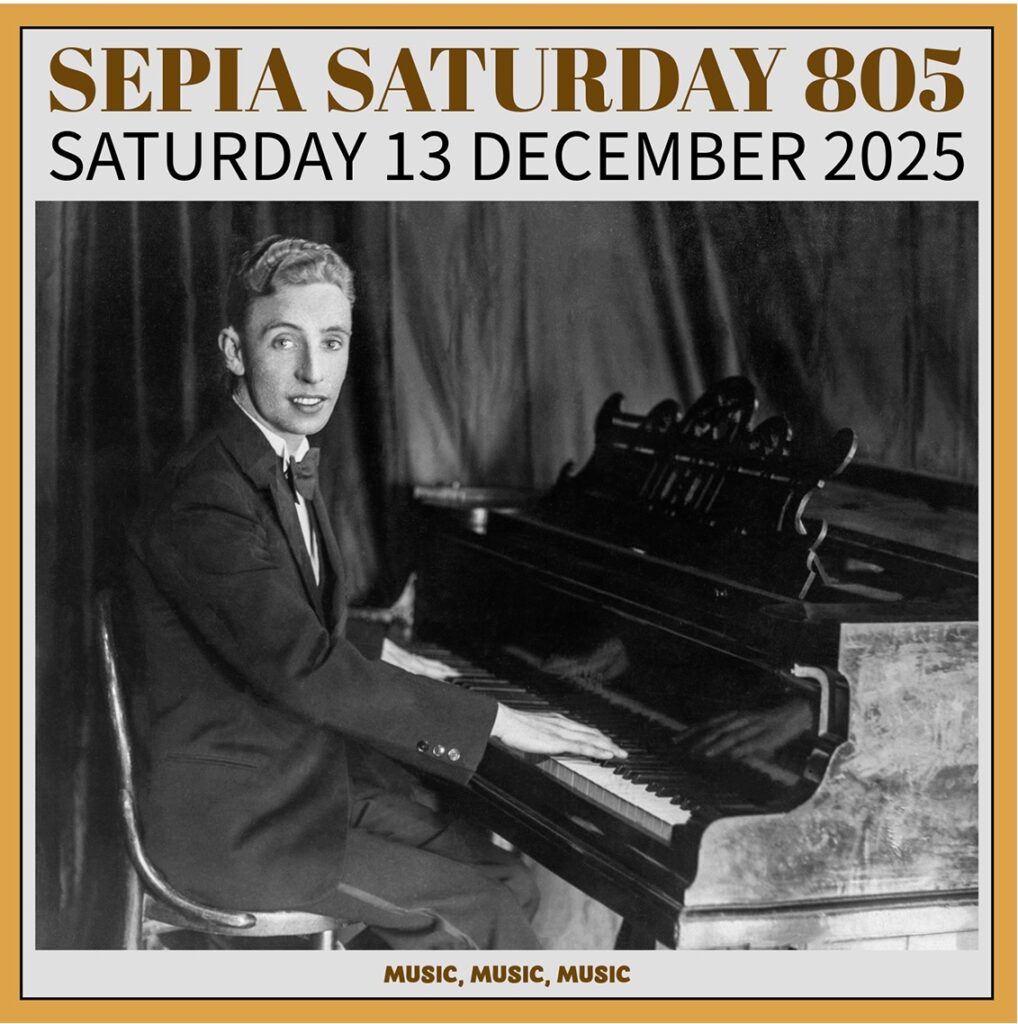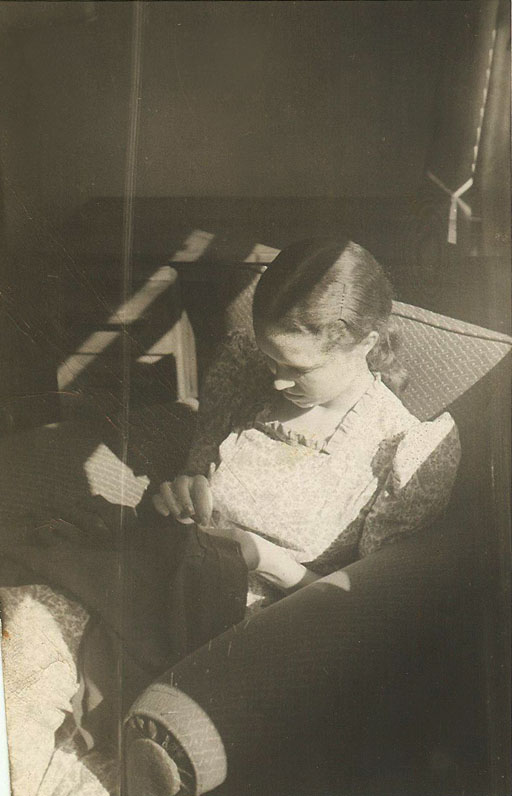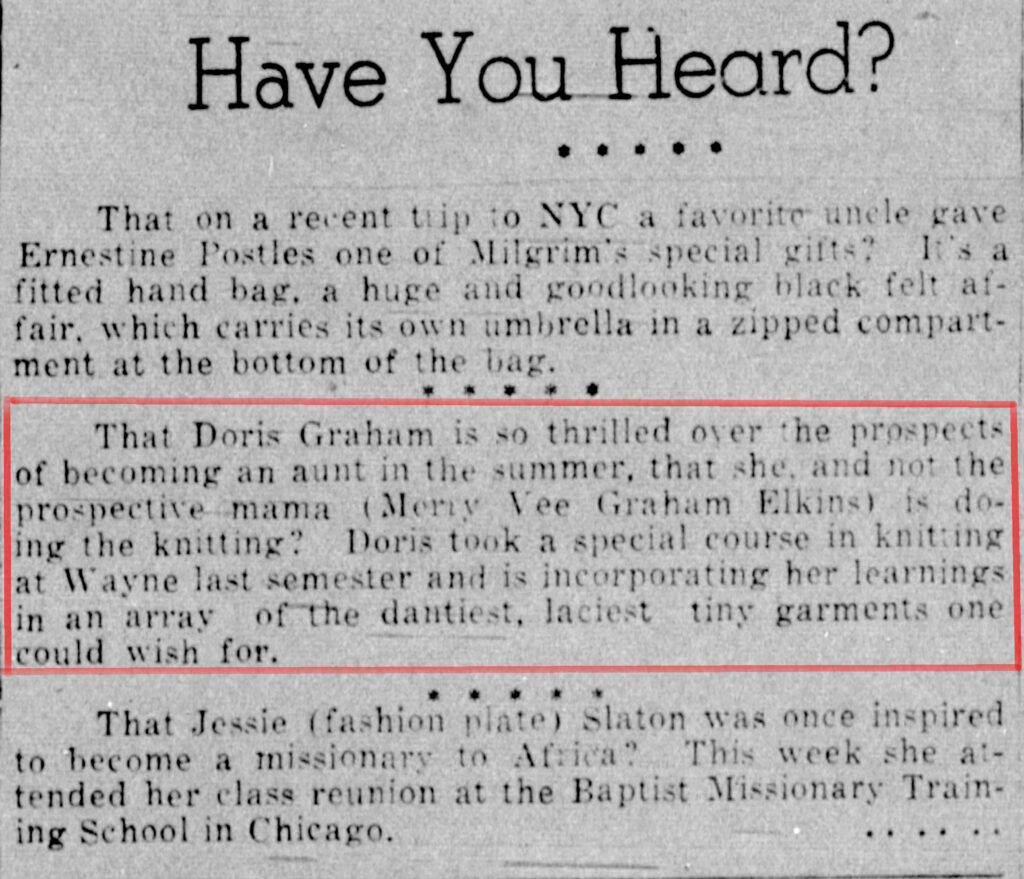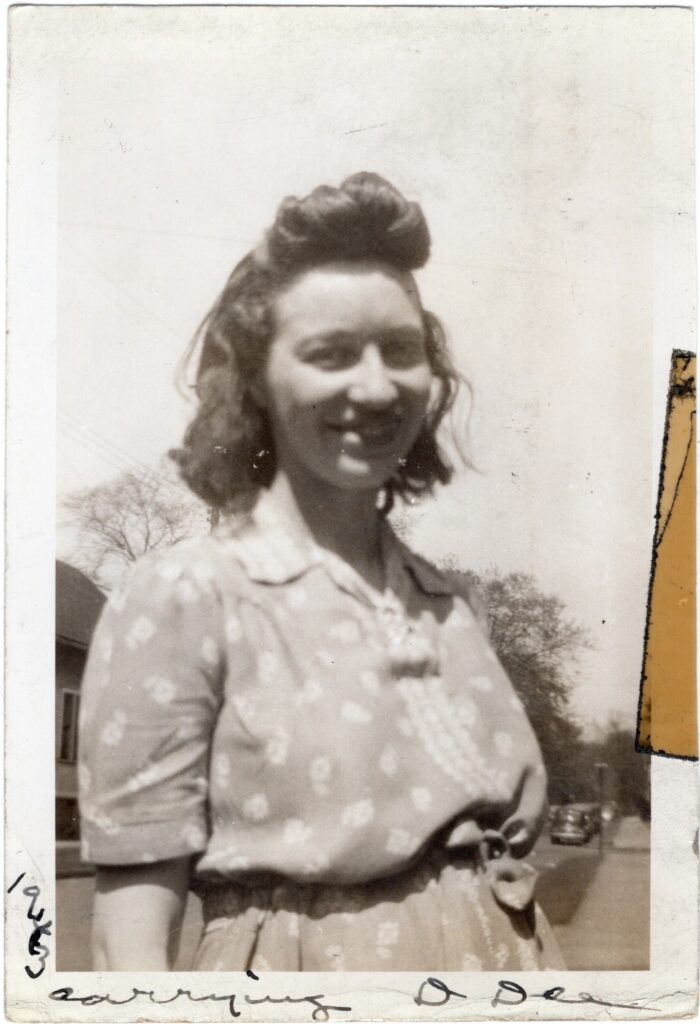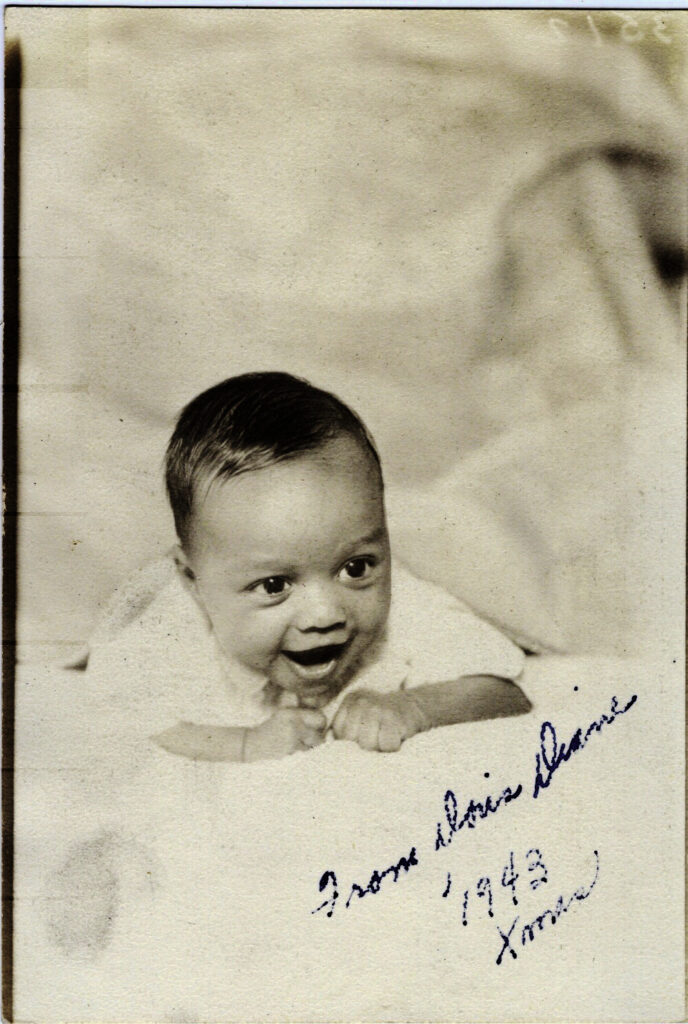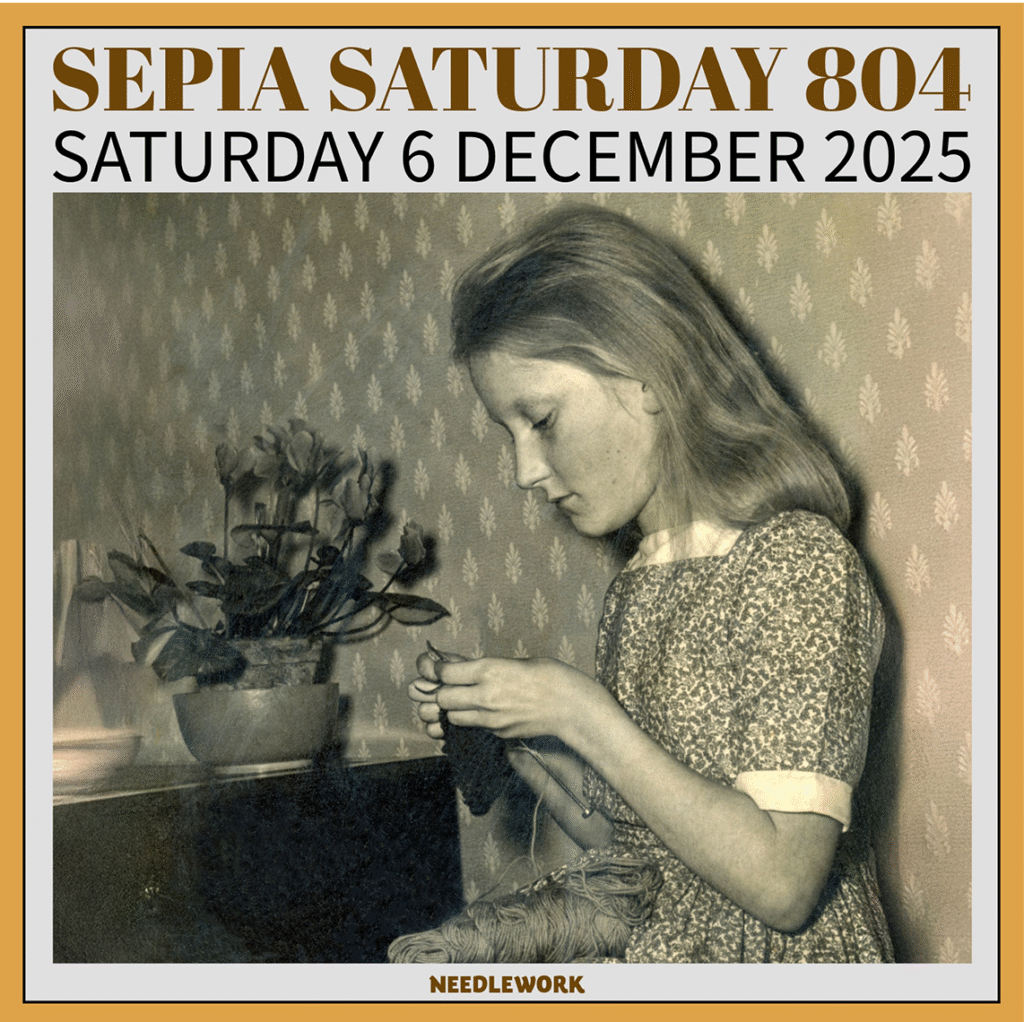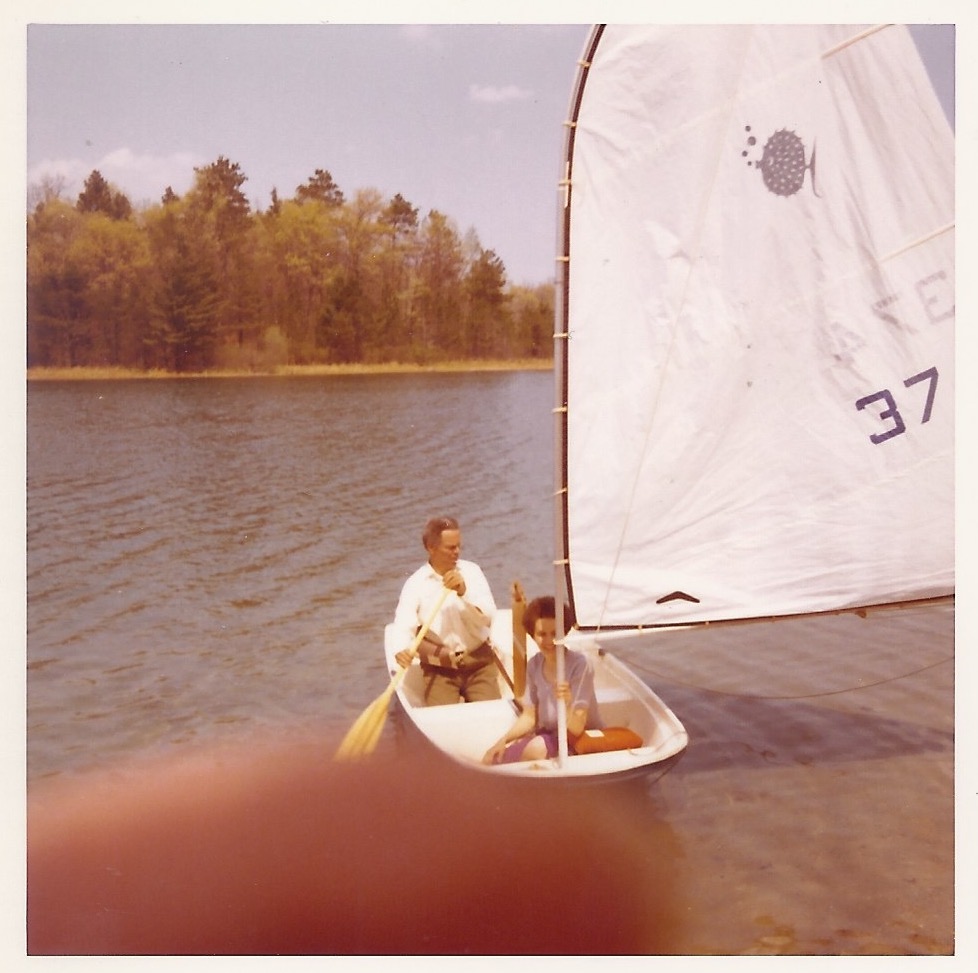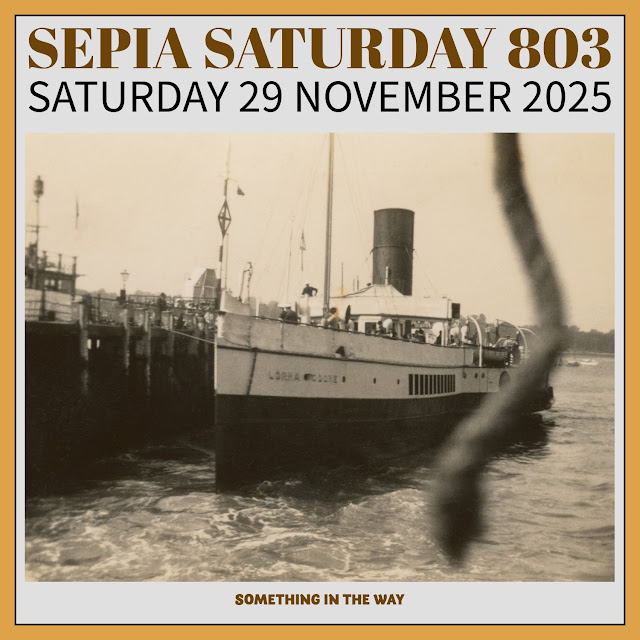Kristin and Pearl Christmas in Springfield, Massachusetts.
All posts by Kristin
December 21, 1904 – Would She Be That Selfish?
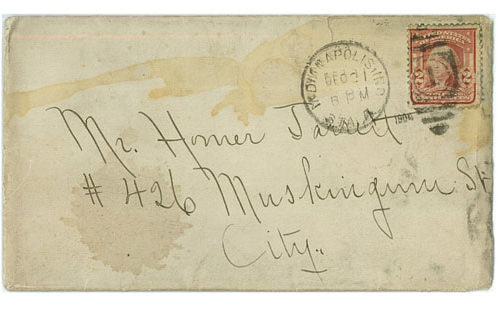
Homer Jarrett
426 Muskingun St. City
230 Kenwood Ave City
December 21, 1904
Mr. Jarrett,
Homer your letter was received, gladly and I shall try to answer every question which you asked of me.
I am very sorry to hear that you are leaving town so suddenly, we shall all miss you very much. You spoke as if someone could influence you in regards to leaving or remaining.
Just for an instant we will say that someone does care for a certain person, and that person wishes to visit his home and mother and friends, whom he has not seen for a long time. Do you think that she would be selfish enough to try to persuade him to remain here, and feeling that his heart is there? I do not think she is that kind of a girl. It is perfectly natural for one to turn homeward at Xmas tide.
Minnie, if she comes at all, will be here about Saturday at noon. Haven’t heard from her for nearly two weeks.
You think that you will not enjoying going to the entertainment alone Monday? I am sorry, for sure. Will you accompany us to Mrs. Rodger’s home and go from there to Church? If you will, be here at 6:15 or 6:00 o’clock if possible, if you are not here at 6:15 we shall go on alone.
Shall be pleased to see you Sunday afternoon. In regards to Xmas present, why anything that you get I shall like it. Do not worry about it for I should be pleased with anything.
Yours Sincerely
Pearl D. Reed
X – XMAS Meeting With Madge Brown

In 1918 and 1919 thirty-seven young women, friends and neighbors of my grandmother Fannie Mae Turner were members of the Edelweiss Club in Montgomery, Alabama. These are snapshots from their lives, place and times.
Click any image to enlarge
The weather that Christmas day was clear and cold, with temperatures dipping down to 24 degrees.
Madge Brown
In the 1920 census, Madge Brown lived with her parents, John and Julia Brown. Both parents were born during slavery in the mid 1850s. They would have been teenagers when the Civil war ended and they were emancipated. Mr. Brown was a farmer and owned his own farm free and clear. He had a truck farm and a stall at the city market where he and his wife sold vegetables. Mrs. Brown gave birth to eight children and six were living.
Madge’s sister, Elizabeth B. Deramus, her husband, James and their one year old son shared the home. Elizabeth taught music and her husband was a medical doctor. All the adults in the household were literate. Madge taught at Booker T. Washington school.
Rites Held For Madge M. Brown Retired Teacher
Miss Madge M. Brown, local retired public school teacher died here Friday night following a lingering illness. She was the daughter of the late John Napolean and Julia Arrington Brown.
Having served in the local school system 30 years, she was honored 3 years ago at Carver High school on her retirement. Her professional career included assignments at Loveless and Carver High.
She was active in several social and civic organizations and was a member of Dexter Avenue Baptist Churh, the March Month Club of Deter, Beta Sigma Chapter of the Sigma Gamma Rho Sorority and the local chapter of the National Federated Club.
Miss Brown was educated at Howard University and the local Alabama State Teachers College.
She is survived by two sisters, Mesdames N. Brown Saffold, Montgomery: Mrs. A. Brown Madison, Atlanta. Nieces included Medames Anna M. Blackwell, San Francisco, Cal’ Anne De Ramus Brown, Schenectady, N.Y., Dr. Helen dermus Mitchell, N. Y. City: nephews, Milton darden, Atlanta, Medames Laura Saffold Carter, Formosa (China), Mildred Banks, Baltimore, Md., June King, John Brown and Zisley Safford, all of this city.
Birmingham Mirror, Birmingham, Alabama • Sat, Feb 10, 1962 Page 10
“A Sumptuous Christmas Dinner”

Edward McCall was the husband of my great grandmother’s oldest sister, Mary Allen McCall. He worked as cook at the City Jail for 30 years, according to the article below. He was also listed as “turnkey” at the jail in several censuses. Edward’s wife, Mary was a talented seamstress, a skill she learned from her mother, Eliza (who I named this blog after).
They were the parents of 7 children. Six of them survived to adulthood. One of their sons, James Edward McCall was a blind poet and publisher first in Montgomery and later in Detroit. Their other children were Annabelle McCall Martin, Leon Roscoe McCall, William Gladstone McCall (who died as an infant), Alma Otilla McCall Howard and Jeanette McCall McEwen.
Edward McCall died in Montgomery, Alabama on February 2, 1920 and is buried there in Lincoln Cemetery. For many years this cemetery was horribly neglected and vandalized. Several years ago the Lincoln Cemetery Rehabilitation Authority was formed and has been working to clean it up and put the graves in order. I hear that it is in much better shape.
Only Fifteen Will Enjoy the Hospitality of the City on Christmas Day
Twenty-six city prisoners whose sentences originally ranged from thirty days to six months, and who had a balance of time of from one to thirty days yet to serve, were given their liberty Saturday at noon as a Christmas present, upon an order to Chief Taylor of the Police Department from Mayor W. A. Gunter, Jr., this being, the annual custom in vogue for a number of years in Montgomery with reference to the city’s prisoners.
The release of the twenty-six left a remaining number of twelve, which together with three convictions at the Saturday session of the Recorders Court, who were unable to pay their fines, aggregate fifteen who will be given holiday Monday and a sumptuous Christmas dinner, which is being prepared today by Ed McCall, the negro (sic) who for thirty years has served as chef at police headquarters.
The dinner will be served in the regular dining room at headquarters and will consist in a menu of camp stew, bread, cakes, fruits, coffee and other good and tasty articles of substantial foods.
Camp stew is similar to Brunswick stew. You can learn more about it here “How Camp Stew Became A South Alabama Icon.“
Backyard Snow
Photos of my mother Doris, my aunt Mary V and their brothers Mershell and Howard Graham. My grandparents bought the house on Theodore in 1923, before my mother was born. They lived there until 1968 when they moved into a two family flat with my family. Here are some winter photos taken in the back yard.
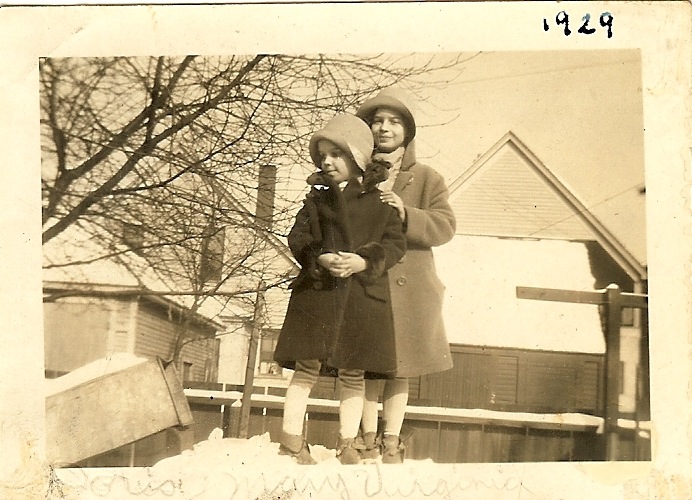
Mershell Cunningham Graham 1921-1927
D – DORIS Graham born 1923
Mary V. Graham Remembers Christmas – 1929
Baby’s First Photograph – Feb. 9, 1929
Pearl Reed Sings in Concert
This post includes both the article announcing the concert and a report written after the concert.
Sings in Concert at Simpson Chapel
The violin recital of Clarence Cameron White will be given this evening at Simpson Chapel under the direction of the Colored Y. M.C. A. Orchestra. He will be supported by the local talent.
The following program will be given:
Overture -“Northern Lights,” Y.M.C. A. Orchestra.
Violin–Hungarian Rhapsodie, Clarence Cameron White.
Solo- Dry Those Tears,” Miss Pearl D. Reed.
Piano–(a) Valse in sharp minor; (b) Polanalse in A major, Alberta J. Grubbs.
Violin-(a) ‘Tran Merci; (b) Scherzo, Clarence Cameron White.
INTERMISSION
Orchestra- The Spartan.” orchestra.
Vocal Miss Pearl D. Reed.
Readings- A. A. Taylor.
Selection- The Bird and Brook,” orchestra.
Clarence C. White’s Recital. The farewell appearance of. Clarence Cameron White, the colored violinist, prior to his going abroad to pursue further his study of the violin, drew a large audience to Simpson Chapel last night. Mr. White came under the auspices of the orchestra of the colored Y. M.C.A. which also contributed to the program. A pleasing feature of the program was the singing of Miss Pearl Reed. leading soprano of the Witherspoon Memorial church choir. Following is the program: Northern Lights,” Y. M. C.A. orchestra; Hungarian rhapsodie (violin), Clarence Cameron White; solo, “Oh, Dry Those Tears”, Miss Pearl D. Reed; piano, valse (a) sharp minor, (b) polonaise in A major, Mrs. Albert J. Grubbs: violin (a) Tran Merci, (b) Scherzo, Clarence Cameron White: vocal solo, “Goodbye,” Miss Pearl D. Reed: select reading, A. A. Taylor; selection, “The Bird and the Brook,” orchestra. The proceeds will be used for the purchase of a piano.
Playing the Guitar and the Piano in 1904
Homer Jarrett
230 Alleghany St. City
2700 Kenwood Ave
March 8, 1904
Homer;
Your letter was handed me at supper and don’t you know, that I was rather glad to hear from you. I did not answer your letter before, because I thought you were tired of hearing such “silly” “little” letters. You have managed nicely to keep yourself out of sight lately, since I’ve come to think of it, I think it has been about a month – don’t you?
I heard of the bad news that you had from home and Homer I send you my sympathy. Are they better now, I mean the ones that were ill?
In regards to my music, why I suppose I am getting on quite well. My tutor flatters me and tells me that I am doing “Oh, so nicely”, but I don’t believe one half of what is told me. Do you know I’ve changed from the guitar to the piano? You must think me the most changeable person Homer, but I get so tired of everything so very soon, you know.
Aren’t you tired of this stuff Homer? Well I am.
Good-bye
Pearl
****
My grandmother also sang in the church choir and at other community events.
You can see an article after the event here -> Pearl Reed Sings in Concert
My grandmother, Pearl Doris Reed, was born in Lebanon, Kentucky in 1886. She was the youngest of the eight children of A is for Anna Allen Reed. The four youngest, including Pearl, were the children of Buford Averitt, a white physician. The older children had different fathers. By 1888 Pearl’s oldest brother, George, had moved to Indianapolis Indiana to work at Van Camps cannery. The rest of the family soon followed. She graduated from high school and took music lessons. In 1903, Pearl was nineteen years old. She lived with her mother and older brothers in North Indianapolis, Indiana.
Homer Jarrett was a cousin of Minnie’s husband, James Mullins. He was born in Harris County, GA in 1882. He completed 8th grade. During the time of the letters he was moving around a lot, from Indianapolis, to Pine Bluff Arkansas to St. Louis MO and back to Indiana. He eventually moved to Boston, MA where he made his living in real estate. He never married. According to his draft records, he was short, slender, tan complexion, black hair and blue eyes, . He died in Boston in 1959 at 77.
You can see the full list of letters here -> Pearl Reed Cleage’s Letters 1903-1905
There was a technical problem with my host server that is blocking comments at the moment. It seems to be cleared up on this Sunday morning.
Knitting for Dee Dee
In 1943, my mother was 20 years old. Excited about her first niece or nephew being born that year, she took a knitting class in college where she made some little outfits. Unfortunately, I don’t have a photo of my mother knitting, so I am sharing one of her sewing.
Have You Heard?
That Doris Graham is so thrilled over the prospects of becoming an aunt in the summer, that she, and not the prospective mama (Merry Vee Graham Elkins) is doing the knitting? Doris took a special course in knitting at Wayne last semester and is incorporating her learnings in an array of the dantiest, laciest tiny garments one could wish for.
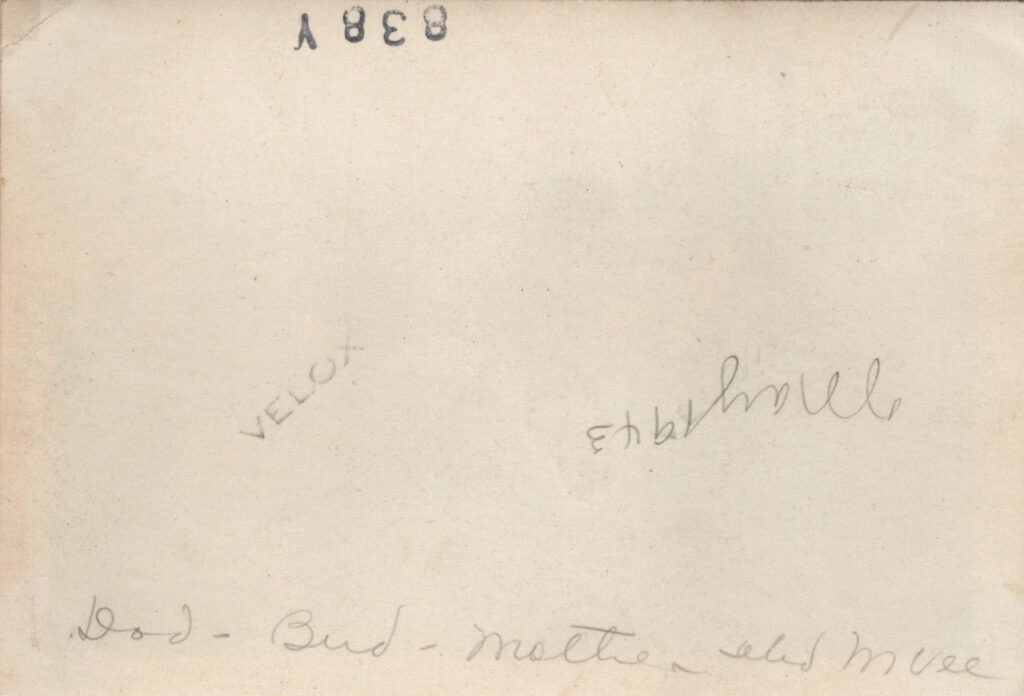
Fannie Turner Graham, my grandmother, wrote this on the back of the photograph. Howard was her youngest child. He was born on the same day but 15 years earlier, as her first grandchild, Dee Dee. Howard died when he was only three. You can read about him here -> N – NINETEEN TWENTY EIGHT Howard Graham was born
I think Dee Dee is wearing a little knitted top here. Maybe from her Aunt Doris.
A Finger and a Sail Boat
Henry is taking me out on Lake Idlewild in the little sailboat. It was used to practice the skills needed to sail the big sailboat on the Detroit River. You can read about that boat here -> Sailing Log Detroit River – 1970
Thanksgiving 1963

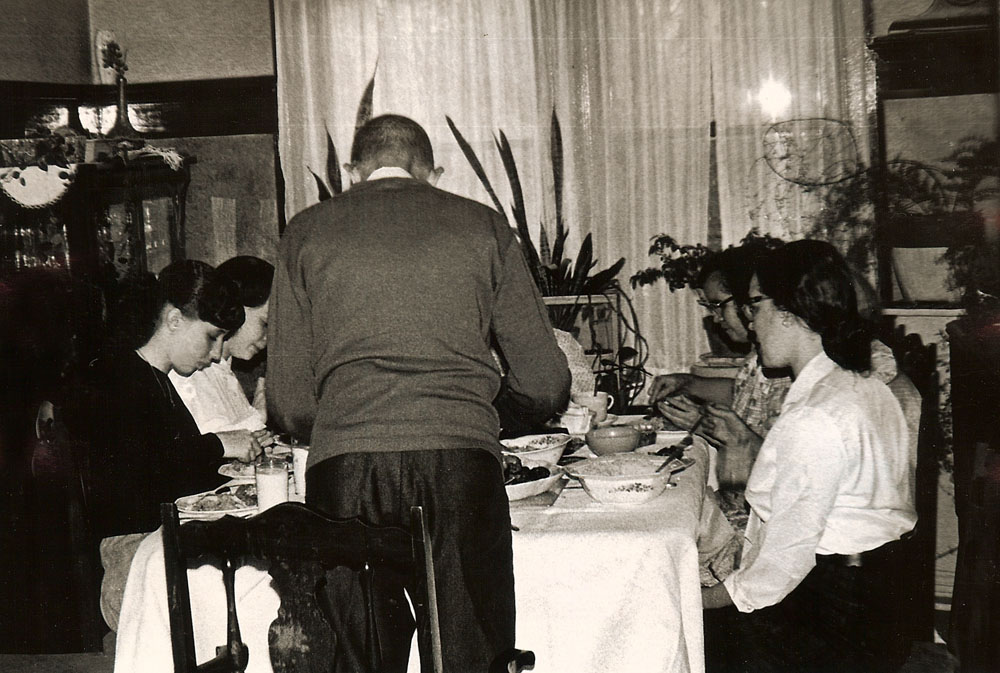
It was Thanksgiving at my Graham Grandparents house in 1963, East side Detroit. My grandfather cuts the turkey. My mother sits on the right. I am on the left, my sister next to me. I wonder where my Aunt Mary Vee and my cousins were? Usually there were four more around the table. How we all fit I do not know, but we did. The house is gone now. Everybody in this photo except my sister and I are dead. We are older than my grandparents were.
Four generations gathered around dining room table in 1963 for Thanksgiving dinner. There was turkey with cornbread dressing cooked by my grandfather. There was white rice, cranberry jelly, green beans, corn pudding and sweet potatoes. There was my grandmother’s finely chopped green salad and her homemade biscuits with butter and with a relish plate holding olives, sweet pickles and carrot sticks.
One thing there wasn’t, was talk about the old days. My grandparents were born in 1888. My grandmother was born Fannie Turner in Lowndes County, Alabama. My grandfather was born Mershell Graham in Elmore County, Alabama. They met and married in Montgomery. My great great Aunt Abbie was born in 1877 in Montgomery, Alabama and was the second to youngest child of Dock and Eliza Allen.
Unfortunately, I can’t go back to 1963 and sit around the table and steer the conversation around to who was where and when and how and why. Did they celebrate Thanksgiving growing up? What did they have for dinner? Who was there? I’d ask Poppy, where he was in 1900? Where were his parents? and what happened to his older brothers? I wish I could hear them tell their stories tomorrow.
Other Thanksgiving Posts
Nov. 28, 1905 – The Last Letter – An Invitation to Thanksgiving Dinner
Thanksgiving 1939
“It’s Thanksgiving eve…” 1945
Thanksgiving 1949
Thanksgiving 1966 – Sermon
Thanksgiving – 1991, Idlewild, Michigan
Thanksgiving – 1991, Idlewild, Michigan – Part 2
Thanksgiving 2019
